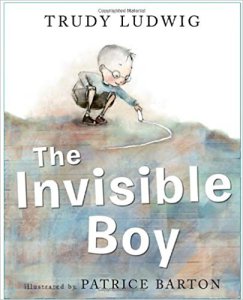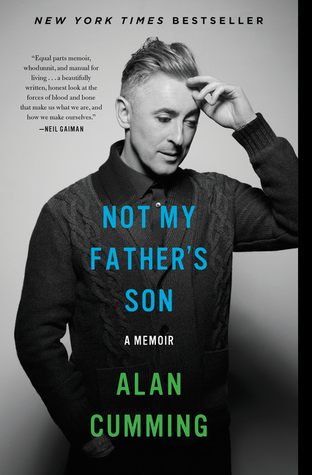Written by: Judy Ludwig
Illustrated by: Patrice Barton

This is the story of Brian, the invisible boy. The story starts off explaining why Brian is invisible- he doesn’t cause trouble at school and doesn’t have friends. Brain is illustrated in black and white, while everyone else is in color. As a teacher, I find this sad and it makes me think of my own class. Are students invisible in my class? How, do I ensure that everyone gets equal time and attention so that no one feels invisible? A thought I bet many teachers have when reading this book.
The story continues and tugs at your heart. Brian doesn’t get picked for a kickball team. Brian doesn’t get invited to a classmates birthday party. Brian doesn’t play with anyone during free time in class. Brian does however, draw. His imagination is quite impressive, as are his drawings. The page where he is drawing is one of my favorites in the book!
The class gets a new student, Justin. At lunch the children make fun of Justin’s lunch, because it is different. The next day Brian leaves a note in Justin’s cubby stating that he thought Justin’s lunch looked good. How brave of Brian! I love that he reached out to the new kid and wanted to make sure he felt included. Justin seeks Brian out on the playground and they have a short conversation.
Brian’s teacher tells the class they are going to write a story based on a picture and asks the class to get in groups of 2 or 3. Brian races to Justin, who already has a partner. However, Justin suggests they be a group of 3 and work together. Go Justin! At this moment Brian starts to gain color. Throughout the remainder of the story Brian gains more and more color until he is illustrated in full color. In the end Brian is no longer invisible.
When I read this story to my class they were in awe. When I asked if anyone has ever felt like Brian, every student raised their hand. Students started sharing stories about when they felt invisible with friends and how hurt they were. This sparked some wonderful conversations about inclusion and friendship. (In third grade the girls start to have friendship issues. So, this story was perfect to help talk about them.) The students picked up on why Brian was invisible in class, why he was invisible on the playground and why he wasn’t illustrated in color. They cheered when Brian left the note in Justin’s cubby and clapped when Justin included Brian in the group assignment. How powerful that a book can illicit these reactions and emotions from 3rd graders on the first read!
I also read this book 3 times to my 4 year old nephew and he asked: ” Why is Brian in no color?” “Why didn’t he get picked?” and he stated: “That’s not nice that he’s alone.” “He looks sad.” The fact that a 4 year old can pick up on these things (with some prompting the first read through) is amazing. The illustrations really speak to the reader as does the message. At the end of the book my nephew said “Look he’s in color because he has friends now!” Yes, little man, Brian is no longer invisible because he has friends.
This book tackles a powerful, emotional issue that many kids, teenagers and adults deal with on a daily basis. I love, love, love that Brian reaches out to Justin. This can teach students not only how to treat a new student in the class but also how to help someone when they are being made fun of and how to reach out and make a new friend. These are all skills that we think are innate but, I find myself teaching them on a daily basis. I also love that when Justin already has a partner he problem solves so that he can include Brian. This is exactly what I would want to happen in my class!
I pray that every child has a least one friend and never has to feel invisible and I am definitely adding this book to my “favorites”! But, that’s just one brain haired teachers opinion.
Advertisements Share this:





